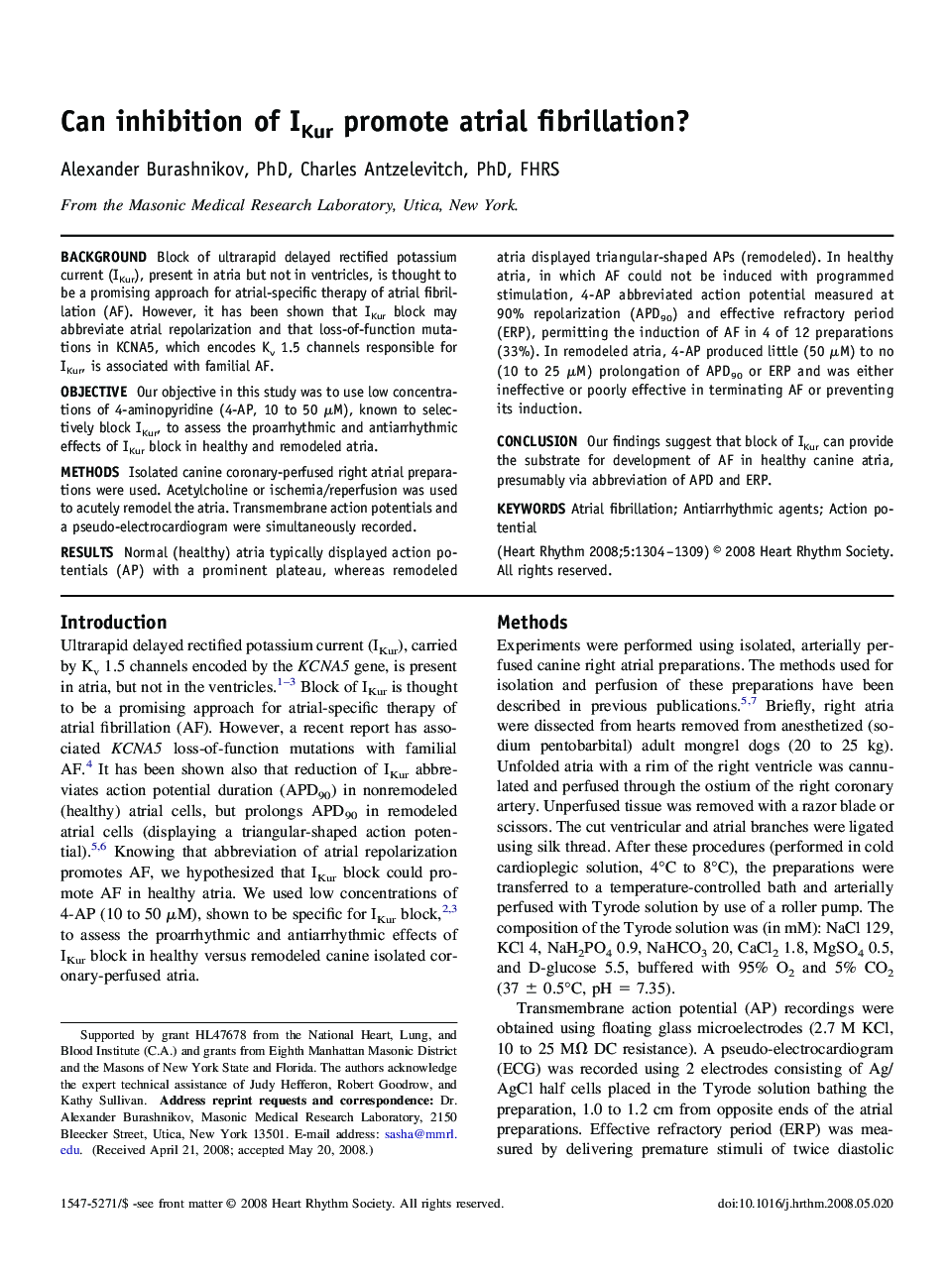| کد مقاله | کد نشریه | سال انتشار | مقاله انگلیسی | نسخه تمام متن |
|---|---|---|---|---|
| 2924215 | 1175898 | 2008 | 6 صفحه PDF | دانلود رایگان |

BackgroundBlock of ultrarapid delayed rectified potassium current (IKur), present in atria but not in ventricles, is thought to be a promising approach for atrial-specific therapy of atrial fibrillation (AF). However, it has been shown that IKur block may abbreviate atrial repolarization and that loss-of-function mutations in KCNA5, which encodes Kv 1.5 channels responsible for IKur, is associated with familial AF.ObjectiveOur objective in this study was to use low concentrations of 4-aminopyridine (4-AP, 10 to 50 μM), known to selectively block IKur, to assess the proarrhythmic and antiarrhythmic effects of IKur block in healthy and remodeled atria.MethodsIsolated canine coronary-perfused right atrial preparations were used. Acetylcholine or ischemia/reperfusion was used to acutely remodel the atria. Transmembrane action potentials and a pseudo-electrocardiogram were simultaneously recorded.ResultsNormal (healthy) atria typically displayed action potentials (AP) with a prominent plateau, whereas remodeled atria displayed triangular-shaped APs (remodeled). In healthy atria, in which AF could not be induced with programmed stimulation, 4-AP abbreviated action potential measured at 90% repolarization (APD90) and effective refractory period (ERP), permitting the induction of AF in 4 of 12 preparations (33%). In remodeled atria, 4-AP produced little (50 μM) to no (10 to 25 μM) prolongation of APD90 or ERP and was either ineffective or poorly effective in terminating AF or preventing its induction.ConclusionOur findings suggest that block of IKur can provide the substrate for development of AF in healthy canine atria, presumably via abbreviation of APD and ERP.
Journal: Heart Rhythm - Volume 5, Issue 9, September 2008, Pages 1304–1309